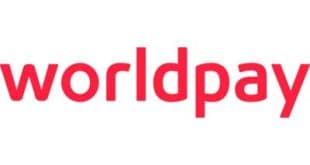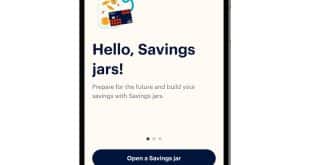By Karen Epper Hoffman
Next year may be the year of NFC. Then again, it may not be. In the meantime, a slew of startups have some alternatives to think about. Ever hear of Starbucks?
Near-field communication technology (NFC) may have taken a few strides forward this year, but for most merchants, banks, and processors, it’s still more theory than practice. Feeling pressure to get mobile-payment and loyalty solutions to market sooner rather than later, payments startups are using two-dimensional barcodes and other scanning or wireless technologies to offer consumers the ability to make point-of-sale payments from their mobile device now.
For the startups, these alternative technologies give them a foot in the door, before mammoth NFC-focused initiatives like Google Wallet and Isis can truly take off. For merchants, they offer the opportunity to test out various payment schemes with customers so they’re prepared when mobile payments become mainstream.
John Heaney, brand director for SparkBase, a Cleveland-based loyalty and gift processor, says that companies like his are well aware of the potential competition from Google Wallet and Isis. However, at the moment, “virtually no one [in the United States] has NFC-enabled phones,” he says. So SparkBase this year released Paycloud, an m-payment wallet that, without NFC, can store loyalty or reward points as well as payment information for use at the point of sale.
Chris Boone, president and chief executive of Cimbal Inc., a Sunnyvale, Calif.-based startup that relies on 2-D barcodes, says solutions like his stand apart from NFC in that, “Ours can work now, and work on any device, the phone, tablet, or mini-notebook, to accept as well as remit payment. It’s POS anywhere.”
Favorable Tweets
To understand what these alternatives are, it’s best to understand what NFC is. Think of contactless cards. Now think of those cards replaced by smart phones, with all the intelligence and display capability they embody. With a handset enabled with NFC, you can wave and pay, of course, but you can also receive offers, tickets, and other media, such as video clips and songs. And you can tap posters, signs, banners, kiosks, anything that’s embedded with NFC chips. It’s contactless payment on steroids.
But that’s a vision of the future. Endless squabbles between wireless carriers and banks have kept NFC in a seemingly perpetual pilot stage. Only this year did Google Inc. and Isis, a joint venture put together by the nation’s largest carriers, begin to make serious moves toward rollouts.
That long delay has frustrated payments strategists, but it has also provided an opening for backers of technologies that may not be as snazzy as NFC but offer plenty of advantages of their own—not the least of which is the ability to deliver transactions now.
Perhaps the best known and most pervasive of the NFC alternatives is the system mobile banking and payments vendor mFoundry Inc. developed with Starbucks Coffee Co. Launched as a 16-store pilot in the fall of 2009, the 2-D barcode-based payment technology was rolled out to more than 8,000 of the coffee chain’s stores nationwide, including to more than 1,000 Starbucks locations inside Target stores.
The application, which works on Apple Inc. and BlackBerry devices, allows customers to check, reload, or pay with their Starbucks gift card account, and also track rewards.
Here’s how it works: Users download the Starbucks mobile application to their mobile device, and then enter the number of their Starbucks prepaid account into the application. When they go to Starbucks to buy a latte, they tell the cashier they intend to pay with their mobile.
They open the Starbucks Card Mobile App on their phone and navigate to a payment screen, where a 2-D barcode is shown. They hold their device up to an optical reader, which scans the payment information, and the usual payment verification takes place.
After the system became available in all U.S. company-owned stores in January, Starbucks announced customers had conducted 3 million mobile transactions within the first three months. Drew Sievers, chief executive of mFoundry, says that most Starbucks customers love the payment option because it speeds transaction time, and they’re demonstrating that affection on social networks. “Nine out of 10 tweets are favorable,” he says. Being a closed-loop system based at a retailer with a pervasive presence and a slavish consumer following have also helped boost usage, he admits.
Upsell And Cross-Sell
Cimbal turns around the conventional approach for barcode-based mobile payment. It’s a 2-D barcode technology, usable for person-to-person as well as person-to-merchant payment. But with Cimbal, the party receiving the payment generates the code rather than the person making the payment. According to Boone, this means less key entry for the consumer at the point of payment, a selling point he believes will encourage more consumers to embrace mobile payment.
The bar code embeds all the data needed for payment, including the purchase amount. Payments are linked to users’ demand-deposit accounts.
Cimbal’s application can run on Apple, Android, or BlackBerry devices, Boone says. The company was set to have “hundreds of merchants piloting” during the fourth quarter, Boone adds, mostly mom-and-pop outfits. Big retailers, he says, are more reluctant to make the necessary changes to their point-of-sale systems.
Launched in August 2010, Boston-based AisleBuyer LLC offers yet another approach to the seemingly straight-ahead usage of barcode scanning. AisleBuyer’s mobile wallet application, which operates on Apple and Android devices, allows a shopper to scan the items themselves as they’re walking through the store and adding them to their cart. As they scan, shoppers are able to access product reviews, price comparisons, coupons, and other offers and incentives within the application.
When they’re done shopping, the consumer uses the debit or credit card information stored within the application to pay for their goods. The app then displays a receipt that the customer can show to a store employee on the way out.
Currently, AisleBuyer is being piloted at five Magic Beans children’s stores in the Boston area, says Scott Tadaro, vice president of marketing for AisleBuyer. He says the company has also signed an as-yet-unnamed grocery chain.
Tadaro says the application gives retailers more opportunity to upsell or cross-sell other merchandise based on more specific and relevant consumer preferences. For example, a user who scans a product and then changes her mind and puts it back might receive a coupon for a competing product.
The app also yields new insight into consumers’ shopping patterns. “You can track where customers are in the aisle and how much time they spend there,” Tadaro says.
Todd Ablowitz, president of the Double Diamond Group LLC, which has consulted for AisleBuyer, says he believes consumers will like the experience of scanning their own merchandise and the comparison and deal-shopping aspects of the system. That’s because it more closely “matches up with the shopping experiences they have online,” he says. Also, he adds, it saves waiting in line to pay.
Do You Zoosh?
But not all NFC alternatives depend on barcodes. Mobile users can find out if a store accepts MobilePayUSA by using the geo-location feature on their phone. Once there, they can pay by launching the application and touching a “pay store” button. They then enter a four-digit PIN and the amount they need to pay.
The payment is routed behind the scenes and an authorization appears simultaneously on their phone and the merchant’s POS terminal. Transactions are charged against credit or debit accounts that are not stored on the phone. And there are no barcodes and no NFC, which limits the need for optical scanners, contactless readers, or other devices.
Randy Smith, chief executive of Universal Commerce Inc., the company that offers MobilePayUSA, says he’s working with independent sales organizations to sell to merchants. MobilePayUSA, he adds, is still in development, but should be launching a private beta by the end of the fourth quarter.
Meanwhile, Sparkbase’s Paycloud uses a non-NFC technology called Zoosh, developed by Sunnyvale, Calif.-based tech startup Naratte Inc. Zoosh relies on ultrasound signals to submit payment information. Users tap their phone on a $50 countertop sensor, which then routes the payment information held in their mobile wallet to the appropriate payment system.
The Zoosh technology encrypts a unique, one-time ID for each transaction, which is transmitted within one second after the tap.
The Paycloud wallet works on iPhones and Android devices, and can also receive and hold loyalty points, rewards, coupons, and promotions related to participating retailers.
Heaney says that more than 3,000 merchant locations were set to roll out the Paycloud payment system beginning in late October. The system has already been piloting with 20 diverse small merchants in Chicago, including a massage business, a wine store, and a cupcake shop.
“The biggest learning was how the merchant wanted more information than we thought they would,” says Heaney. “They understand the value of a mobile loyalty program and of reaching customers directly.”
‘Nascent Stage’
While all these technologies arguably could be positioned as a potentially useful payment option until NFC emerges, the question is: What will happen when NFC does emerge?
Einar Rosenberg, chief technology officer at Narian Technologies, which develops software based on NFC, says there are fewer “environmental issues” with NFC. Such issues include extreme cold or hot weather affecting a read, or screen brightness, which could also affect the read. “NFC doesn’t have the limitations of the 2-D barcode,” Rosenberg says. He adds that NFC already also boasts a common standard, unlike 2-D barcodes, which do not.
Also, the cost of installing optical scanners or sensors, without a large market of customers already using these payment schemes, presents the kind of chicken-and-egg scenario that could easily turn off merchants, Rosenberg adds.
Add to that the support for NFC of most major U.S. banks and many large retailers, wireless conglomerates, and online giants like Google, and he believes it will be hard for any of these emerging payment alternatives to stand in the way of NFC’s eventual juggernaut. “Ninety-nine percent of the financial industry is committed to driving NFC,” he says. “When was the last time you saw a card with a 2-D barcode that wasn’t just for Starbucks?”
Ablowitz says that NFC technology also boasts a higher success rate (fewer failed transactions), in large part because it doesn’t suffer from the same effects of cold and heat or even in-store lighting that other technologies might. “NFC is the best way to deal with checkout as it is today,” he says. “NFC works every time and doesn’t require you to set up your phone a certain way.” As an example, he says he needs to change the brightness setting on his smart phone every time he makes a payment using the phone at Starbucks.
Even mFoundry’s Sievers admits: “Barcodes will always be around but NFC will eventually eclipse them.” Sievers adds that barcodes will be used in “niches” but won’t account for the majority of mobile payments in the “not too distant future.”
Executives for many companies that are now offering mobile payment alternatives to NFC say that once that technology gains traction, they will also offer NFC options to their existing payment schemes.
Heaney says that SparkBase’s Paycloud will support NFC in subsequent versions. “We do believe that NFC will be the dominant transaction method for mobile pay at the POS,” Heaney adds. “We want to be hardware agnostic. Barcodes seem more of an interim solution.”
Still, Ablowitz sees a future melding of mobile payment technologies, a future where barcodes or other payment schemes could operate in areas where NFC does not fit as well. “NFC will win at the cash register,” he says. “But we’ll also see more solutions bringing mobile payment into the field. We’re still in a very nascent stage of mobile payment and innovation.”
Next year may or may not prove to be the long-awaited breakout year for NFC. But what is clear is that payments are happening now using technology that does what NFC promises to do. Those technologies may ultimately yield to NFC, but in the meantime they’re generating plenty of opportunity.






